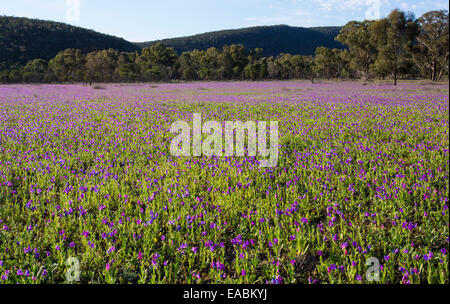
Western US – Prolonged bloom of 45 – 50 days generally in summer, but with repeat blooming in California. Major – up to 500 lb/acre in a good year Minor, but valuable due to earliness/frost hardinessĪs clover honey, alfalfa honey granulates readily Minor, strong hives can collect up to 100 lb

No, honey is clear, heavy bodied, of excellent flavor Joe-Pye weed, boneset, white snakeroot Įutrochium spp., " Eupatorium spp., Eupatorium purpureum Eupatorium perfoliatum Eupatorium ageratoidesĬan be, dark honey with distinct flavor, granulates quickly Major – 300–1,000 lb/ acre honey depending on soil, 500–2000 lb of dark blue pollen vulgare is the protection of the nectar inside the flower from vaporization (when weather is hot) or flushing away (when rains). No honey is pale yellow or amber with strong flavor Įchium vulgare Echium vulgare is most widely known, though about 60 additional species existįeral In California, spring-blooming plant with repeat bloom, fall bloom provides nectar for bees for overwintering.

Minor, but can be major on cultivated area, 200 lb/acre honey, 60–160 lb pollen Major – 120–250 lb/acre, depending on soil and if good fertilization, Asclepias syriaca has the highest honey yield. Minor in most areas, very low quality pollen, strong colonies may store 50–90 lb of surplus from it įlowers, crops, herbs, and grasses Plant typeīlue bugle, bugleherb, bugleweed, carpetweed, common bugle įeral, all species are great for honeybees, nectar is so abundant that shaking the blossoms allows visible nectar fall Vaccinium corymbosum, Vaccinium angustifolium, Vaccinium pennsylvanicum Yes, short flow up to 14 days white, aromatic honey see Monofloral honeyįeral, ornamental, produces a high volume of honey on a cycle of every five to eight years, with lower volume of nectar other years Major, but outside temperatures are usually too cold for bees to fly, 100–150 lb/acre 1,500 lb pollen Major – 800–1200 lb/acre short bloom period of about 10 days Minor, can be major under the correct conditions/location No, the nectar is mostly used for spring brood-raising and not stored for surplus. Major in southern Appalachians, select northern locations, and Piedmont Honey is light in color and mild in flavor. Minor, or major depending on location and weather.

Major but temperature usually too cold for bees to fly Source for honey bees / pounds of honey per acre Honeydew sources are not included in this listing. benefit a bee keeper who is willing to travel with his hives throughout the season. The nectar sources from large cultivated fields of blooming apples, cherries, canola, melons, sunflowers, clover, etc. Urban, suburban, and uncultivated areas provide more consistent warm-season nectar forage than areas that are heavily cultivated with only a few agricultural crops. Generally, the more diverse a forage area is, the better for a stationary apiary.

An agricultural crop such as canola or alfalfa may be a major or minor source depending on local plantings. The classification in major or minor nectar sources is very dependent on the agricultural use of the land. In botany, the term phenology refers to the timing of flower emergence, sequence of bloom, fruiting, and leaf drop in autumn. Hopkins' bioclimatic law states that in North America east of the Rockies, a 130-m (400-foot) increase in elevation, a 4° change in latitude North (444.48 km), or a 10° change in longitude East (two-thirds of a time zone) will cause a biological event to occur four days later in the spring or four days earlier in the fall. A good predictor for when a plant will bloom and produce nectar is a calculation of the growing degree days. The plants listed below grow in USDA hardiness zone 5. Which kinds grow in an area depends on soil texture, soil pH, soil drainage, daily maximum and minimum temperatures, precipitation, extreme minimum winter temperature, and growing degree days. The nectar resource in a given area depends on the kinds of flowering plants present and their blooming periods. A honey bee collecting nectar from an apricot flower.


 0 kommentar(er)
0 kommentar(er)
